Welcome to the Hotel… Quarantine

The Sunday Times reports that the UK is set to copy countries such as New Zealand and introduce mandatory hotel quarantine for all arrivals into the country, replacing what has hitherto been a requirement only to go home directly and self-isolate there:
Ministers have ordered plans to be drawn up for a fresh crackdown at Britain’s borders to stop new variants of the coronavirus undermining the vaccination effort.
Officials have been told to prepare for the creation of quarantine hotels for those arriving in Britain and to use GPS and facial-recognition technology to check that people are staying in isolation.
This is a significant change in policy and comes as the Government is simultaneously downplaying suggestions that the various mutations of the virus may be resistant to the vaccine when talking about their ongoing roll-out of it to millions of Brits, and, at the same time, using precisely those fears to justify more travel restrictions.
Last week officials were ordered to study New Zealand’s policy of “directed isolation”, where everyone arriving is charged for a stay at an airport hotel and forced to remain in isolation for two weeks.
In Australia it is between 14 and 24 days, with travellers charged between £1,500 and £2,500. The UK Government is only considering a system where visitors pay the costs themselves.
Civil servants will also examine how to emulate a scheme in Poland, where those told to isolate are subject to “enhanced monitoring”. Each person is contacted once a day and told to send a photograph of themselves at the location where they are confined. These are cross-referenced using GPS data and facial-recognition software. Those who fail to comply within 20 minutes receive a visit from police.
It is understood that ministers discussed both ideas at a meeting on Thursday. A senior Government source said that, if used, this technology would be confined to new arrivals in the UK, not those told to self-isolate who are already here.
The plans go further than changes announced last week that require everyone coming to the UK to produce a negative Covid test. “Air corridors”, which allowed some people to come in more easily, were scrapped.
Cabinet sources said Matt Hancock, the Health Secretary, floated a moratorium on all international travel for a month, to stop new variants in their tracks, but faced resistance from Grant Shapps, the Transport Secretary, on the grounds it would cripple trade.
Concerns that the pandemic response has been accompanied by a tendency towards China-style surveillance won’t be assuaged by these plans to require a digital ‘minder’ in the room at all times.
If these variants are to be treated with such extreme caution now, for fear that the vaccines provide no immunity to them, how will normal travel ever resume, given that new strains are bound to keep emerging and vaccines can only be developed and manufactured so quickly?
Worth reading in full.
Lord Sumption and Dr John Lee on The Big Questions
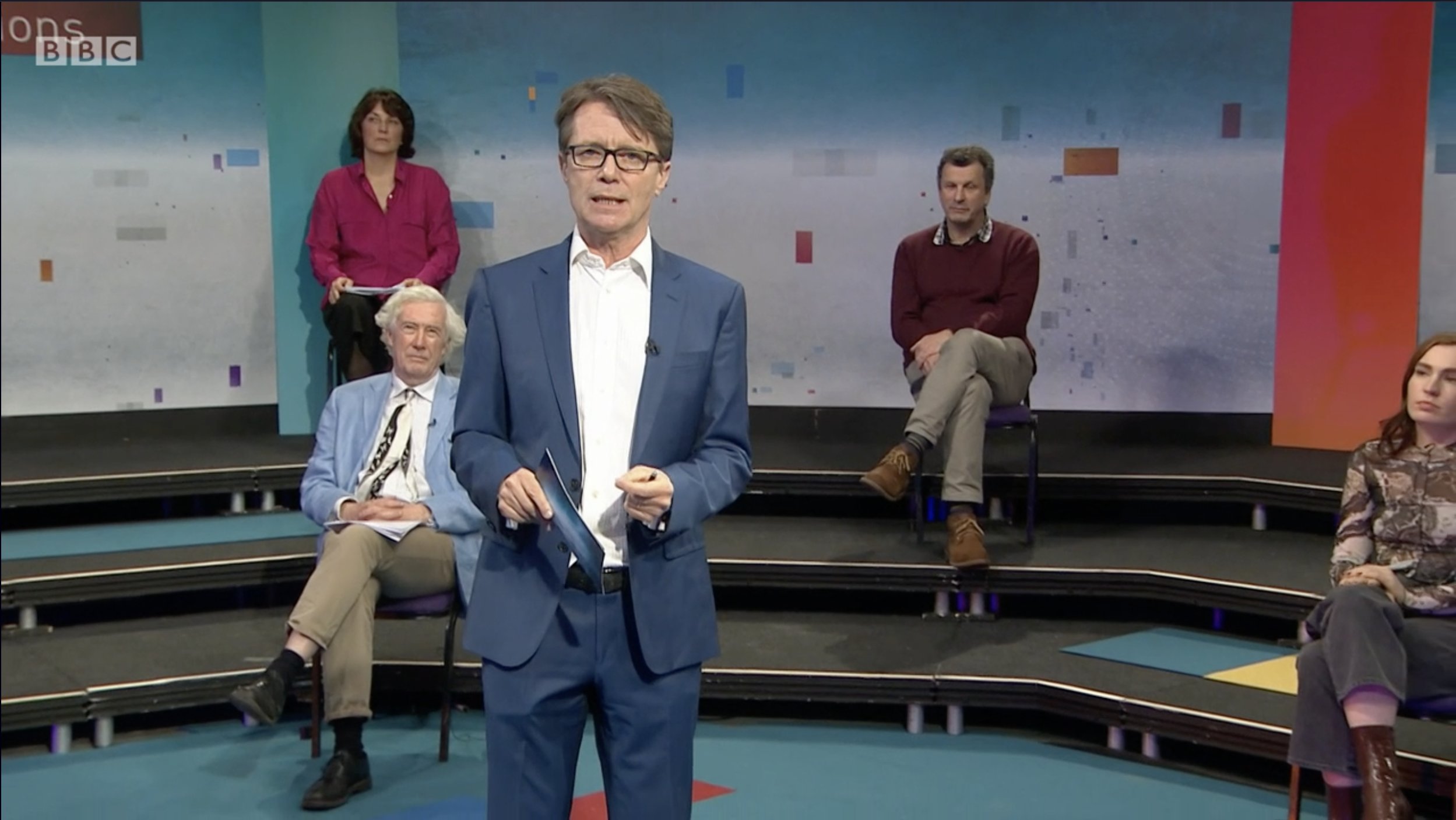
Sunday morning’s edition of The Big Questions, the BBC’s ethical, moral, and religious discussion show, which has returned in a socially distanced format, featured two prominent lockdown sceptics: Lord Jonathan Sumption and Dr John Lee. It was noteworthy for having being one of the first instances of a broadcast debate on lockdowns with participants physically present (although not the audience). The panel included various representatives of the full spectrum of opinion on lockdowns, including Professor Calum Semple from the University of Liverpool, Imam Asada Zaman from the Muslim Youth Foundation, Maddy Mussen, assistant editor at The TAB, as well as a strong ally to the sceptic cause, and Shelagh McNerney from the Academy of Ideas, among others.
Much was made afterwards of Lord Sumption’s remarks about the “value of life”. He made the common-sense observation near the top of the programme that we should attribute less ‘value’ to the life of an older person than a younger one, and made reference to the familiar concept of Quality-Adjusted Life Years (QALYs) used by health services worldwide.
“All lives are not of equal value because the older you are, the less life you have left,” he said.
He then faced repeated rebukes from other panellists, including from Deborah James, a sufferer from Stage 4 bowel cancer, who claimed Sumption had essentially declared that her own life was worthless.
“I’m the person who you say their life is not valuable,” she said, at which point Lord Sumption interrupted her: “I didn’t say it wasn’t valuable, I said it was less valuable.”
She then responded: “Who are you to put a value on life? In my view and I think in the view of many other people, all life is sacred and I don’t think you should make these judgement calls.”
A torrent of pearl-clutching followed on social media, with a stream of Twitter users sharing edited excerpts from the programme and condemning Sumption as a “fascist” or “eugenicist”. Even the Daily Mail ran a piece claiming “former Supreme Court judge Lord Sumption today told a Stage 4 bowel cancer sufferer that her life was ‘less valuable’ than others”.
He did say that, but he was nonetheless misunderstood. The concept of QALYs has been developed so we can make value judgements when facing difficult medical choices in a way which doesn’t commit the cardinal sin Lord Sumption was accused of, namely, making a subjective judgement about how much value to place on a person’s life. Instead, it attaches a value to a unit of a person’s life – a year – and then adjusts that value according to the quality of life that they will have during that year. It doesn’t take into account what sort of person they are, their values, what they do with their time, etc. So he didn’t say Deborah James’s life was “less valuable” in the judgemental sense he was accused of. Rather, he was saying it was only less valuable than, say, a healthy young person because she won’t live as long and her quality of life during her remaining time won’t be very high.
The fact that Lord Sumption’s remarks were greeted with such shock – both on the programme and afterwards – is due to people’s ignorance of health economics. They are apparently unaware that health economists make these sort of calculations all the time – as do the heads of intensive care units in hospitals when they triage a patient. Indeed, the people answering emergency calls make these life-and-death decisions on an hourly basis, dispatching ambulances to some callers but not to others. As Dr John Lee pointed out, “Not making these decisions is a luxury health economists don’t have.”
It was a shame Nicky Campbell, the show’s host, didn’t do more to clarify this misunderstanding.
Nevertheless, the programme is worth watching in full.
One in Six Covid Patients Caught Disease in Hospital

One in six patients have been infected in hospital, according to David Rose and Laura Dodsworth in today’s Daily Mail.
More than 25,000 patients have caught coronavirus in hospital since the second wave of the pandemic began in September.
One in six COVID-19 patients in NHS hospitals in England were infected while being treated for other conditions, according to internal Health Service figures.
So far this month, 5,684 Covid-positive in-patients out of 44,315 – about one in eight – were infected after being admitted for other conditions.
An intensive care consultant in the Midlands said that he took a “snapshot” of all the patients in his unit on one day last month and found that 40% of them had been infected in hospital.
A specialist Covid nurse treating people at home said many of her patients had contracted the virus in hospital and were re-admitted when their conditions worsened.
The nosocomial nature of the disease has been a cause for concern since the start, with such experts as Dr John Ioannidis were making the point as early as March 2020. It’s also been flagged up frequently by the senior doctor who writes regularly for Lockdown Sceptics.
David Oliver, an NHS Consultant, recently wrote in the BMJ:
Hospitals are currently in the eye of a COVID-19 storm, driven by a rapid rise in community infection rates and more new emergency cases presenting daily. But before the current surge there were concerns about Covid infection acquired or identified during a hospital stay.
In October the Healthcare Safety Investigation Branch (HSIB) issued a report on the factors behind hospital acquired COVID-19 infections in England last spring. We now have better access to testing and personal protective equipment (PPE). We have better knowledge from research and guidelines. But the rates of Covid infection officially classified as “hospital acquired” have yet to fall.
NHS hospitals are fielding formal complaints from people angry and distressed that they, or a family member, may have contracted infection in what they expect to be a place of safety. Teams battling to deliver clinical care in a highly pressurised environment and at some personal risk will be sent down a distracting, demoralising warren of complaint handling and root cause analysis, for something that can seem inevitable and out of our control.
Sir Simon Stevens’s Interview with Andrew Marr

The senior doctor who regularly contributes to Lockdown Sceptics has given us this reaction to the interview given by NHS Chief Executive Sir Simon Stephens on the Andrew Marr Show yesterday.
Yesterday, Simon Stevens was interviewed by Andrew Marr on the BBC. He used two statistics to illustrate the pressure the NHS was under. Firstly, that one Covid patient was admitted to hospital every 30 seconds and that there were 15,000 extra Covid inpatients in English hospitals since Christmas Day.
Is this true?
One patient every 30 seconds is the equivalent of 2,880 Covid patients per 24-hour period. The most recent figures show that the “total reported admissions to hospital” released on the daily hospital situation report have been in excess of 2,880 every day since December 29th.
However, the “admissions from the community” are lower than this figure and have only been above the 2,880 threshold since January 4th. The NHS is typically opaque at defining what these terms mean. I take the difference between the two figures to indicate the number of patients contracting Covid in hospital.
With respect to the statement about the total number of inpatients, it is correct that on Christmas Day there were approximately 17,000 Covid inpatients and that number is now 32,000.
What Simon Stevens forgot to mention was that patients are also being discharged from hospital. The discharge information is only disclosed in the monthly data packet and we only have information up to January 6th.
The problem the NHS has is in managing the flow of patients through the hospital. Simply put, there are more patients coming in or catching Covid in hospital than there are going out. Some of this problem is just bad luck because of the viral spread – some of it is NHS inefficiency.
I have displayed the relevant information in Graph 1 below. This a complicated graphic with two different Y axes, so I will explain:
Firstly, note the orange bars – these are “admissions from the community”. In other words, the patients coming through the doors every day with Covid. The blue bars are “new Covid hospital patients – admissions plus positive tests in hospital”. The NHS does not explicitly acknowledge that there are any patients acquiring Covid in hospital, but I take this to mean that the difference between the orange and the blue bars are the numbers of nosocomial infections every day. Any time the blue line crosses 2,800 on the left-hand side Y axis, the rate of admission per 24 hours is one patient every 30 seconds.
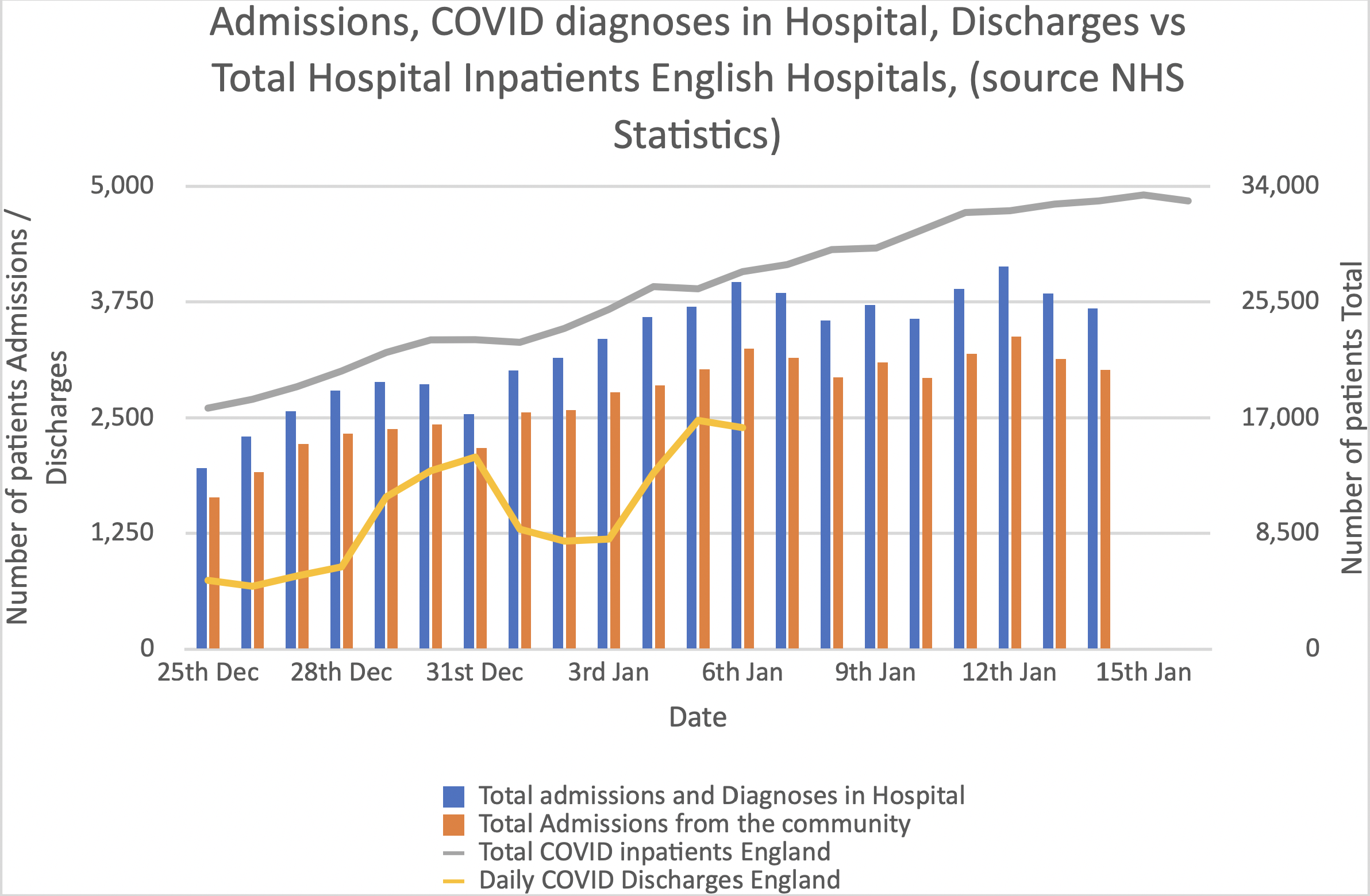
Next, observe the yellow line. This is the daily rate of hospital discharge of Covid patients. You can see that this is quite a low number over Christmas Day and Boxing Day – patients are very rarely discharged on bank holidays or at weekends.
In the week before Christmas, discharges were running at about 1,200 per day – or in Simon Stevens soundbite speak, “one discharge every 72 seconds”. The yellow line picks up after Christmas, dips again over new year then rises to 2,400 per day by January 5th – or “one discharge every 36 seconds”.
The problem is that the yellow line is always below the level of the blue bars, so the total number of Covid patients is always rising. Have a look at the gray line using the right-hand Y axis, showing a rise from 17,000 on December 25th to 32,000 by January 16th.
We are not allowed to know where the yellow discharge line currently stands. These figures are available but will not disclosed by the NHS until mid-February.
Patients that have recovered from Covid may not be discharged for a variety of reasons. I have covered these before in previous posts. The principal problems are that care homes are reluctant to take patients back from hospitals because of what happened in the Spring. Some patients do not want to go home as they have vulnerable relatives who are shielding. Some may not have anyone at home and may be too frail to look after themselves. This is a perennial problem in the NHS and is exacerbated every winter. Despite having six months to prepare for an expected winter crisis, the NHS didn’t prepare for this eventuality. I don’t recall Andrew Marr asking Simon Stevens to explain why.
If the yellow discharge line rises above the blue bars, then the total number of inpatients on the gray line would start to fall and the pressure on hospitals would reduce.
For some reason Simon Stevens forgot to mention that – but it’s not a very snappy soundbite.
More On Harms to Children

Yesterday we flagged up the Sunday Times article by Dr Vanessa Moulton describing the huge increase in mental health issues she is witnessing among children in her clinic. Sadly, news of the mounting impact of lockdowns on children comes thick and fast at the moment. The New York Times has a piece by Matt Richtel on the upward trend in children’s screen addictions, which were already a serious cause for concern among many experts before the Covid crisis.
The day after New Year’s, John Reichert of Boulder, CO, had a heated argument with his 14 year-old son, James. “I’ve failed you as a father,” he told the boy despairingly.
During the long months of lockdowns and shuttered schools, Mr. Reichert, like many parents, overlooked the vastly increasing time that his son was spending on video games and social media. Now, James, who used to focus his free time on mountain biking and playing basketball, devotes nearly all of his leisure hours – about 40 a week – to Xbox and his phone. During their argument, he pleaded with his father not to restrict access, calling his phone his “whole life”.
“That was the tipping point. His whole life?” said Mr. Reichert, a technical administrator in the local sheriff’s office. “I’m not losing my son to this.”
Nearly a year into the coronavirus pandemic, parents across the country – and the world – are watching their children slide down an increasingly slippery path into an all-consuming digital life. When the outbreak hit, many parents relaxed restrictions on screens as a stopgap way to keep frustrated, restless children entertained and engaged. But, often, remaining limits have vaporized as computers, tablets and phones became the centerpiece of school and social life, and weeks of stay-at-home rules bled into nearly a year.
The situation is alarming parents, and scientists too.
“There will be a period of epic withdrawal,” said Keith Humphreys, a Professor of Psychology at Stanford University, an addiction expert and a former senior adviser to President Barack Obama on drug policy. It will, he said, require young people to “sustain attention in normal interactions without getting a reward hit every few seconds”.
Experts voice further concerns about addiction later in the article.
Recent neuroimaging research suggests heavy use of certain video games may cause brain changes linked to addictive behaviors. One of the study’s authors, Christian Montag, a Professor of Molecular Physiology at Ulm University, also co-authored a recent overview of digital use during the COVID-19 pandemic, published last month in Addictive Behavior Reports. It reported that German teens are playing video games with much greater frequency than before lockdown and concluded “that overuse of digital technologies represents a likely phenomenon and outcome of the COVID-19 pandemic”.
Dr Humphreys, from Stanford, said he believed that adults and children alike could, with disciplined time away from devices, learn to disconnect. But doing so has become complicated by the fact that the devices now are at once vessels for school, social life, gaming and other activities central to life.
These psychological concerns are not the only ones to have been raised. A paper entitled: “Digital Screen Time During the COVID-19 Pandemic: Risk for a Further Myopia Boom?” published in the American National Centre for Biotechnology Information (NCBI) last summer drew attention to looming problems with eyesight, concluding in its abstract:
Increased digital screen time, near work, and limited outdoor activities were found to be associated with the onset and progression of myopia, and could potentially be aggravated during and beyond the COVID-19 pandemic outbreak period. While school closures may be short-lived, increased access to, adoption of, and dependence on digital devices could have a long-term negative impact on childhood development. Raising awareness among parents, children, and government agencies is key to mitigating myopigenic behaviors that may become entrenched during this period.
Stop Press: Christina Lamb wrote in yesterday’s Sunday Times about the stresses faced by the children of poor families in Tower Hamlets in the East End of London.
When Rekha Begum’s seven year-old son Moussa showed her what he had written on the “hope tree” he was asked to draw for school, she cried. He had written: “A house.” “I felt so bad,” she said. Begum, 40, who is disabled, lives with her four children, aged from seven to 21, in a cramped second-floor flat on a council estate in Tower Hamlets, east London, one of the most deprived – and Covid-infected – parts of Britain.
From the end of the street, past a patch of grass littered with discarded syringes, where Moussa once picked up a condom, the gleaming glass towers of Canary Wharf, the headquarters of leading banks and finance companies, can be seen on the horizon. It seems a world away. More than half of children in Tower Hamlets live in poverty.
A former carer, Begum shares a bed with Moussa. Her two other sons, aged 15 and 19, share a room, and her daughter sleeps on the sofa. “Nobody gets much sleep,” she shrugged.
Apart from Moussa, who is at primary school, one son is doing GCSEs and the two eldest children are university students. They have two laptops in total, including for Begum’s work as virtual assistant for a cab company, and she fears her children are falling behind – disastrous on estates rife with gangs and drugs.
“I asked for another, but the teacher said, ‘You have two and many families don’t have one,’” Begum said.
Lockdown the third time round, with its cold, dark days and return to homeschooling, may feel harder than ever – the novelty of baking sourdough, Yoga with Adriene, or Zoom cocktails long having worn off for many – but for families such as Begum’s and others in London’s poorest borough, it is unimaginable.
I was shocked when I first met these families last April to see how different life was in lockdown from mine, with a garden and plenty of space, and have stayed in touch with them since.
Nine months on – more than half of them spent under lockdown – many households are reaching breaking point. “I feel like a small boat being tossed about with dangerous waters all around,” said Begum. “We’re all feeling suffocated, both physically but also mentally.”
Such is the mental toll that a few months ago her eldest son went to Shadwell Basin and tried to throw himself into the Thames.
Care Home Staff Face Sack After Shunning Vaccine
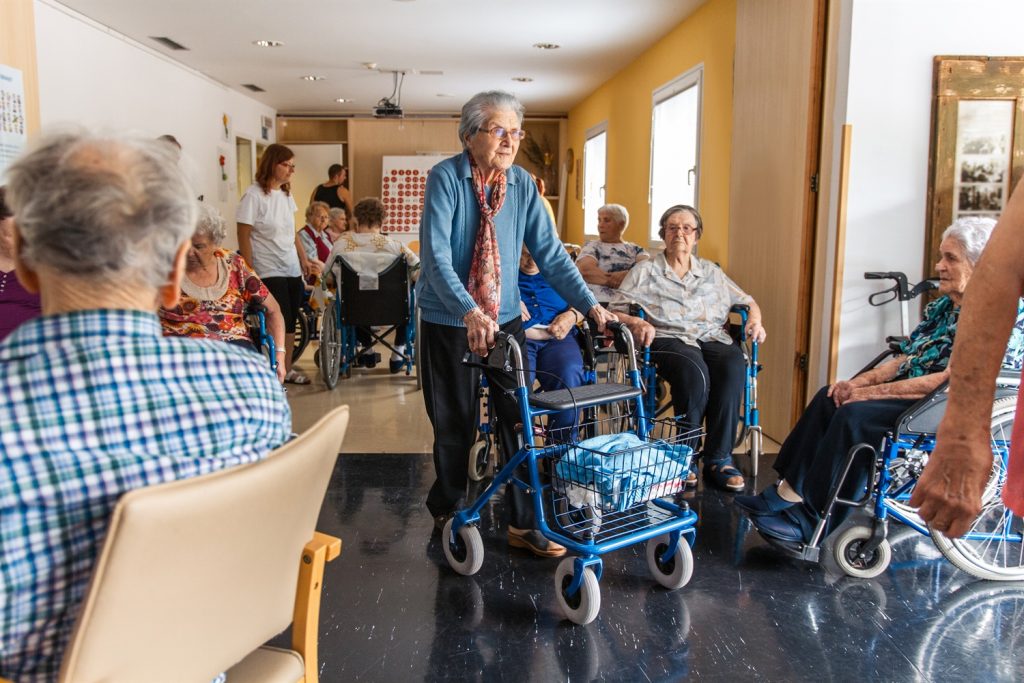
The Sunday Times reports that:
The National Care Association has taken the unprecedented step of seeking a legal opinion on whether care home workers can be made to accept vaccination after thousands refused. Between 6% and 8% of the 1.5 million adult social care workforce in England are declining jabs, despite the number of coronavirus cases in care homes trebling in the past month, according to industry reporting of uptake across the country.
This is a fairly small proportion compared the general population. With 92-94% declaring themselves willing to get the jab, it could be seen as a rather drastic approach to try to force 100% compliance. If successful, it may also set a worrying precedent for other employers considering a similar approach – the so-called ‘no jab, no job’ policy. The piece continues with poll data:
The development comes as a poll reveals that only 41% of 18- to 34-year-olds say they will “definitely” take the vaccine. In the survey by the research data company Focaldata, the percentage of people who say they will definitely have the jab increases in line with age.
Among 18 to 24-year-olds, just over one in three (36%) say they will definitely be inoculated against the virus, rising to 44% among 25- to 34-year-olds, 56% among 35- to 44-year-olds, 71%- among 45 to 64-year-olds and 90% among those aged 65 and above.
Ethnic minorities are even less likely than young people to say they will take the vaccine, with just a third (33%) committed to having the jab.
Overall, one in six people are opposed to having the jab – with women more hesitant than men. The poll reveals that 60% of women and 69% of men will definitely take the vaccine. The proportion of the population that must be infected or inoculated to achieve “herd immunity” is uncertain, but it is likely to be more than 80%.
People in Greater London are the most cautious about having the vaccine, with just 41% of those asked saying they will definitely have the jab, followed by those in the East Midlands (52%) and West Midlands (56%).
Scotland has the highest percentage of people willing to have the jab, with 78% who will definitely have the vaccine.
The Government may have a challenge on its hands regarding the remarkable vaccine scepticism among ethnic minorities. Having been at pains to emphasise the higher risk faced on average by BAME people during the pandemic, and after a year of heightened tension around Black Lives Matter and race issues, it’s conceivable that a Tory government could find it politically unpalatable to be seen to move in the direction of direct or indirect coercion against the expressed will of two-thirds of the BAME community.
The Chairwoman of the National Care Association, Nadra Ahmed, outlined some of the reasons given by care staff for their reticence:
Ahmed said although the proportion of staff refusing to take the vaccine had fallen since the roll-out began, the figures were still a concern. “I think we started with between 15% and 18% of the workforce, we were being told, who were reluctant to have it, but I think that it’s dropped to about 8%.
“We are also hearing that some of them are based around reasons that are religious, or they’ve got conditions, or it’s a fear… Very few are conspiracy theory types, but there are [some] within the numbers that we’ve been told about.
“Even one [care worker turning down the vaccine] is more than we would want. We’ve asked for a legal opinion on it – we’re just waiting for that legal opinion to come through.”
The poll reveals the two most common reasons people are opposed to the jab is concern the “vaccines have been rushed through” (45%) and “wanting to wait until more people have had it to see if it is safe” (35%).
Lack of trust in institutions and authorities plays a larger part than the more extreme conspiracy theories. One in five (21%) mention a lack of trust in the pharmaceutical companies that made the vaccine as a reason for their opposition, while one in six (16%) “don’t trust the people who want us to take the vaccine”.
One in five (21%) of those sceptical about taking a vaccine say that this because they believe “the side effects and potential risks of the vaccine are worse than the disease itself”, while just over one in 10 (13%) “would rather let nature take its course”.
A Wittgensteinian Writes…

We are publishing a piece today entitled “Why We Shouldn’t Moralise Means to Moral Ends” by Ben Hawkins, a trainee lawyer with an interest in the philosophy of Ludwig Wittgenstein.
There’s an excellent Mitchell and Webb sketch in which a pair of ministerial aides are reporting back to their minister on potential solutions for dealing with a recession… “raising VAT, cutting VAT, raising interest rates, raising interest rates and VAT, lowering income tax and raising VAT”. But despite their efforts, they haven’t been able to land on anything – when their proposed measures are put through their computer models, none of them seems to work. Suddenly the minister interrupts. “Have you tried ‘kill all the poor’?” When the shocked aides protest the minister replies, “I’m not saying do it, I’m just saying run it through the computer – see if it would work.”
Whilst undoubtedly a broadside aimed at the austerity policies of the time, the sketch works as it highlights a feature of our moral reflexes that is often overlooked: for most moral agents with genuinely held moral beliefs, it is not enough to avoid doing wrong; to merely consider doing that wrong action feels like a moral transgression in and of itself. A serious moral agent, believing that killing people is wrong, would never consider running “kill all the poor” through the computer, as doing so would seemingly violate the principle of the sanctity of life which the belief in not killing people upholds. As Robert Webb’s character shrieks exasperatedly when asked why he won’t just give it a go – “Because it’s offensive and evil!”
Worth reading in full.
Telegraph Letter
A reader spotted a good letter that appeared recently in the Telegraph.
SIR – I was recently speaking to a friend in South Africa, who told me that, every day, the government publishes the recovery rate of Covid patients, alongside the data on cases and deaths. This means that South Africans receive some good news – and are reminded that getting the virus is not a death sentence for most healthy citizens.
Our Government, by contrast, seems intent on delivering only the bad news. It’s time that we were given some perspective and hope.
Roger Woodgate
Wellingborough, Northamptonshire
NHS Worship: A Doctor Writes…
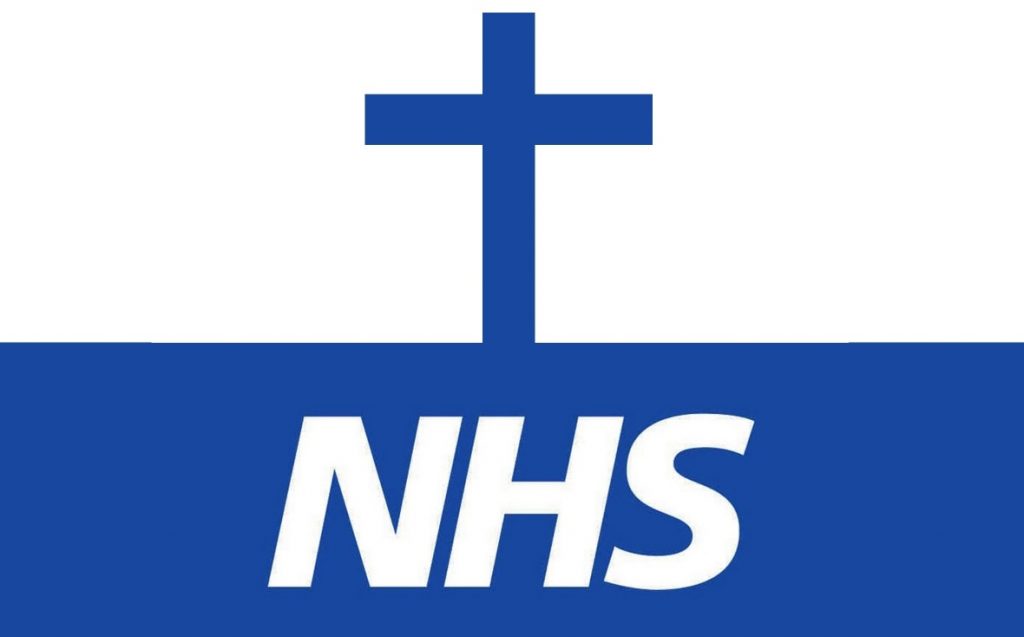
We are also publishing a piece called “Ruminating About the New Religion” by a medical doctor who writes under the pseudonym Dr J. Here is an excerpt:
In 2020, a new reformation has happened, hastened on by the ‘pandemic’, and credited to the good folk of China. The Church of England, no longer the nation’s moral compass or cultural centre, not only ceased to be the established church, but gladly ceded that title to the NHS, the new established Church in England. Venerable Cathedrals like Salisbury now close their doors to public worship opting for something on the Internet. Yet they open the doors to the new church, the NHS, and allow everyone in to be vaccinated, something that would ostensibly help ‘protect the NHS’. This followed from the example of See of Canterbury which in March first ordered all Churches to close and threatened all pastors with sanctions if they even thought about opening them or stepping inside. All of this was to protect the NHS and save lives. The NHS, the new established religion, must be protected at all costs, especially by the old established religion. No one is permitted to die, or at least not from Covid. And besides, the former CofE never had the time to tell followers how to do that well anyway.
The new head of the Church, our PM, duly appointed its new Archbishop, the Health Secretary, and he appointed and ceded all power to decide how the nation would live its life – or not – to his high priests, the collective heads of the health services and our new prognosticator in chief, Neil Ferguson. A new Parliament was established of course, now called SAGE, appointed to be the new theologians of this religion, instructing us on the reality of certain death if we don’t listen to and heed all they teach and say. In this newly established Church, all other institutions are insignificant – the family, religion, businesses, education, universities – and there will no longer be freedom of speech and freedom of conscience, democracy, or the right to challenge the established orthodoxy. If it’s not the NHS, it’s not important. If all heads of the health service don’t believe and preach it, then neither can you. If they believe and preach it, then you must as well.
The new heads of the newly established Church and its high priests and its theologians have instead decided to preach the doctrines through the pulpit of the BBC, and censor, ridicule, sideline, demonise and use their compliant members to enforce the orthodoxy in the press and on social media.
Worth reading in full.
The Wisdom of Martin Luther King

Today is Martin Luther King Day in the United States so we thought we’d share a quote from the good reverend.
You may be 38 years old, as I happen to be. And one day, some great opportunity stands before you and calls you to stand up for some great principle, some great issue, some great cause.
And you refuse to do it because you are afraid…Y ou refuse to do it because you want to live longer… You’re afraid that you will lose your job, or you are afraid that you will be criticized or that you will lose your popularity, or you’re afraid that somebody will stab you, or shoot at you or bomb your house; so you refuse to take the stand.
Well, you may go on and live until you are 90, but you’re just as dead at 38 as you would be at 90. And the cessation of breathing in your life is but the belated announcement of an earlier death of the spirit.
Ipso Ruling: More Reader Responses

Two more readers with scientific backgrounds have kindly sent in comments about the Ipso ruling against Toby which we reported on two days ago. We published the first set of responses yesterday.
Martin Evison PhD, a retired Science Professor formerly at Sheffield, Toronto, and Northumbria Universities, wrote:
I was disappointed to learn of the IPSO ruling, which I think is mistaken.
With regard to ‘herd immunity’, I refer you to Johns Hopkins School of Public Health, whose Q&A would appear to concur specifically with Toby’s comments in the Daily Telegraph regarding herd immunity and the proportion of the population needed to confer it (see the following):
“What is herd immunity?When most of a population is immune to an infectious disease, this provides indirect protection – or herd immunity (also called herd protection) – to those who are not immune to the disease. For example, if 80% of a population is immune to a virus, four out of every five people who encounter someone with the disease won’t get sick (and won’t spread the disease any further). In this way, the spread of infectious diseases is kept under control. Depending how contagious an infection is, usually 50% to 90% of a population needs immunity to achieve herd immunity.” (Johns Hopkins School of Public Health)
The term ‘natural immunity’ is a little ambiguous, as it can be used i) to distinguish between pre-existing immunity and immunity conferred only following infection or vaccination; ii) to distinguish between vaccine-acquired immunity and immunity acquired without a vaccine, and iii) to distinguish between innate – including T-cell mediated – immunity and adaptive immunity mediated by antibodies – which I anticipate was Toby’s intended meaning. There is a substantial literature on the latter topic. Here is an accessible recent scientific summary.
If Toby is asserting that natural, T-cell mediated and other innate immunity – including that resulting from prior infection with other coronaviruses, combined with a level – say 17% seroprevalence – of adaptive immunity is probably sufficient to confer herd immunity in London – then this is at least a plausible hypothesis reflecting conventional wisdom.
If scientific uncertainty applies to one claim, then it must equally apply to its opposite – e.g. that natural, T-cell mediated and other innate immunity – including that resulting from prior infection with other coronaviruses, combined with a level – say 17 % seroprevalence – of adaptive immunity is probably insufficient to confer herd immunity in London.
If Ipso want to preferentially silence one claim over the other, they need to say why and provide evidence supporting that opinion.
It is at best unethical for the Government or its scientific advisers to pretend they are basing their decisions on certainties, where they do not exist. It seems, furthermore, that they are ignoring a number of certainties – or at any rate preponderance of evidence in their favour – that have become increasingly apparent since March 2020.
Gordon Burns, a retired Professor of Cancer Research who has a BSc in Biochemistry, a Postgraduate Diploma and Primary MRCPath in Microbiology, and a PhD from Cambridge with five years as a Postdoctoral Researcher in Immunology, writes:
The interviews published and the comments provided in the mainstream media on viral replication and the natural immune response are so utterly ignorant and such irresponsible misinformation that I feel obliged to comment. I will try to put things in lay terms.
First – contrary to public belief and propaganda on vaccines – viruses are not killed by antibodies. For the simple reason that – unlike bacteria and other living organisms – they are not living organisms and thus cannot be “killed”, whether by antibodies or anything else within the body.
Infectious respiratory viruses have an RNA core (for replication) and a protein coat. The protein coat consists of invariant structural proteins and the ’spike protein’ that contains within it the small peptide that constitutes the cell-binding domain (CBD).
Most structural proteins are shared by viral groups such as coronaviruses.
Upon primary infection of mucosal and epithelial cells in the bronchial tract, the infected cells in distress display the viral proteins at their cell surface. Structural and spike. Cytotoxic T-cells recognise these foreign proteins and kill the infected cells. These viral proteins (structural or spike) are remembered by the T-cells which survive for (almost) life as memory T-cells.
Killed cells release viral particles that are excreted or infect other cells until the battle is won. Never to progress further.
Thus, in many cases, viral infections never proceed beyond this stage and T-cell immunity is retained. The only antibodies generated at this site are IgM and IgA antibodies.
Immunisation, by contrast, induces IgG antibodies at a distal site. These can be deleterious to primary infections.
If you like, I can extrapolate further on the IgG response, but readers should be aware of the primary response explained above.
We’re grateful for these contributions, and any more expert readers are welcome to email us their responses.
Round-up
- “Lockdown was never the only option” – a tour de force by Fraser Myers in spiked
- “From Trumpism to lockdown, people believe in the craziest things” – Lionel Shriver’s latest Spectator column
- “France’s vaccine problem” – Professor of French History, John Keiger, also in the Spectator, on France’s déclassement
- “Media’s libertarian Covid sceptics under fire from senior Tory” – Incorrectly calling us “Covid sceptics”, rather than lockdown sceptics, The Guardian reports on Neil O’Brien MP’s hysterical social media attacks on Toby
- “Stop Quebec’s ineffective lockdown now” – Professor Douglas Farrow of McGill University calls for an end to useless lockdowns in his Canadian province, in The Post Millennial
- “Covid passports: a freedom certificate that may get the world travelling again” – The Sunday Times reports on this dystopian possibility
- “Italian Restaurants Open in Mass Protest at Lockdown Rules” – In addition to the video we included in yesterday’s round-up, James Delingpole in Breitbart reports that the mass defiance of curfews is increasing in Italy, as well as spreading to Poland. Find evidence of these rebellions on Twitter by searching for #IoApro
- “Maskless Laurence Fox Is ‘Selfish Loathsome Tool’ Says Bully Tory MP” – Delingpole again on Fox’s ordeal after posting a photo with his new mask exemption lanyard
- “Italy’s South Tyrol again flouts Rome over virus closures” – More on the #IoApro rebellion as regions defy the Government, from ABC News
- “Dutch police blast angry anti-lockdown protestors with water cannon and charge them on horseback in terrifying scenes in Amsterdam” – The Mail Online reports on the extraordinary clashes in The Netherlands
- “Freedom won’t survive a world where every lethal virus triggers another lockdown” – Dan Hannan in The Telegraph fears a future of risk-aversion
- “The Cost of Lockdowns” – Wide-ranging video interview with Canadian physician Dr Patrick Phillips
- “Where’s our Dunkirk spirit?” – Jeremy Clarkson bemoans all the moaning in The Times
- “The New Normal Documentary” – Documentary by happen.network setting out the Great Reset conspiracy theory in a way that doesn’t make it sound like a conspiracy theory
- Maajid Nawaz’s Twitter thread collating lockdown harms – The LBC presenter is a lonely voice against lockdowns at the station
Theme Tunes Suggested by Readers
Seven today: “So Lonely” by The Police, “Don’t Stand So Close to Me” by Sting, “Throw Away the Key” by Linx, “Behind the Mask” by Michael Jackson, “Hide Your Face” by Lynyrd Skynyrd, “Which Side Are You On?” by Pete Seeger, and “A Walk in the Park” by Nick Straker Band.
Love in the Time of Covid

We have created some Lockdown Sceptics Forums, including a dating forum called “Love in a Covid Climate” that has attracted a bit of attention. We have a team of moderators in place to remove spam and deal with the trolls, but sometimes it takes a little while so please bear with us. You have to register to use the Forums as well as post comments below the line, but that should just be a one-time thing. Any problems, email the Lockdown Sceptics webmaster Ian Rons here.
Sharing Stories
Some of you have asked how to link to particular stories on Lockdown Sceptics so you can share it. To do that, click on the headline of a particular story and a link symbol will appear on the right-hand side of the headline. Click on the link and the URL of your page will switch to the URL of that particular story. You can then copy that URL and either email it to your friends or post it on social media. Please do share the stories.
Social Media Accounts
You can follow Lockdown Sceptics on our social media accounts which are updated throughout the day. To follow us on Facebook, click here; to follow us on Twitter, click here; to follow us on Instagram, click here; to follow us on Parler, click here; and to follow us on MeWe, click here.
Woke Gobbledegook

We’ve decided to create a permanent slot down here for woke gobbledegook. Today, we have this opinion piece in the Washington Post by Cristina Beltrán entitled “To understand Trump’s support, we must think in terms of multiracial Whiteness”, wherein she burnishes her ‘anti-racist’ credentials by associating everything she dislikes with “whiteness”, which, she argues, is a quality that can be espoused by people who are not actually white. So progressive….
The Trump administration’s anti-immigration, anti-civil rights stance has made it easy to classify the President’s loyalists as a homogenous mob of white nationalists. But take a look at the FBI’s posters showing people wanted in the insurrectionist assault on the US Capitol: Among the many White faces are a few that are clearly Latino or African American.
Such diversity highlights the fact that President Trump’s share of the Latino vote in November actually rose over 2016, notwithstanding years of incendiary rhetoric targeting Mexicans and other Latino communities. Yes, Trump’s voters – and his mob – are disproportionately White, but one of the more unsettling exit-poll data points of the 2020 election was that a quarter to a third of Latino voters voted to reelect Trump.
She continues in a similar vein and adds:
Rooted in America’s ugly history of white supremacy, indigenous dispossession and anti-blackness, multiracial whiteness is an ideology invested in the unequal distribution of land, wealth, power and privilege – a form of hierarchy in which the standing of one section of the population is premised on the debasement of others. Multiracial whiteness reflects an understanding of whiteness as a political colour and not simply a racial identity – a discriminatory worldview in which feelings of freedom and belonging are produced through the persecution and dehumanization of others.
Multiracial whiteness promises Latino Trump supporters freedom from the politics of diversity and recognition. For voters who see the very act of acknowledging one’s racial identity as itself racist, the politics of multiracial whiteness reinforces their desired approach to colorblind individualism. In the politics of multiracial whiteness, anyone can join the MAGA movement and engage in the wild freedom of unbridled rage and conspiracy theories.
Multiracial whiteness offers citizens of every background the freedom to call Muslims terrorists, demand that undocumented immigrants be rounded up and deported, deride BLM as a movement of thugs and criminals, and accuse Democrats of being blood-drinking paedophiles.
Stop Press: Unsurprisingly, Titania McGrath has weighed in:
“Mask Exempt” Lanyards

We’ve created a one-stop shop down here for people who want to obtain a “Mask Exempt” lanyard/card – because wearing a mask causes them “severe distress”, for instance. You can print out and laminate a fairly standard one for free here and the Government has instructions on how to download an official “Mask Exempt” notice to put on your phone here. And if you feel obliged to wear a mask but want to signal your disapproval of having to do so, you can get a “sexy world” mask with the Swedish flag on it here.
Don’t forget to sign the petition on the UK Government’s petitions website calling for an end to mandatory face masks in shops here.
A reader has started a website that contains some useful guidance about how you can claim legal exemption. Another reader has created an Android app which displays “I am exempt from wearing a face mask” on your phone. Only 99p.
If you’re a shop owner and you want to let your customers know you will not be insisting on face masks or asking them what their reasons for exemption are, you can download a friendly sign to stick in your window here.
And here’s an excellent piece about the ineffectiveness of masks by a Roger W. Koops, who has a doctorate in organic chemistry. See also the Swiss Doctor’s thorough review of the scientific evidence here and Prof Carl Heneghan and Dr Tom Jefferson’s Spectator article about the Danish mask study here.
The Great Barrington Declaration
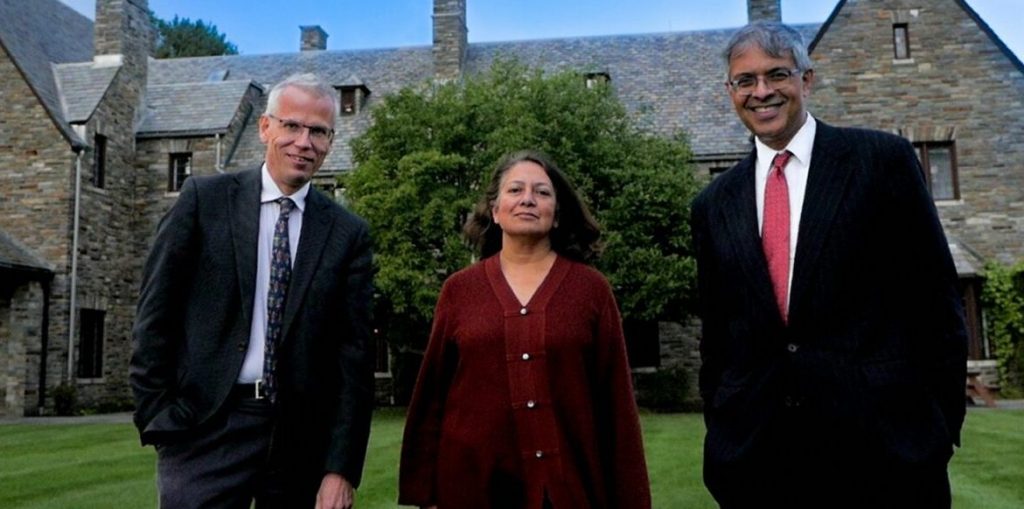
The Great Barrington Declaration, a petition started by Professor Martin Kulldorff, Professor Sunetra Gupta and Professor Jay Bhattacharya calling for a strategy of “Focused Protection” (protect the elderly and the vulnerable and let everyone else get on with life), was launched in October and the lockdown zealots have been doing their best to discredit it ever since. If you googled it a week after launch, the top hits were three smear pieces from the Guardian, including: “Herd immunity letter signed by fake experts including ‘Dr Johnny Bananas’.” (Freddie Sayers at UnHerd warned us about this the day before it appeared.) On the bright side, Google UK has stopped shadow banning it, so the actual Declaration now tops the search results – and Toby’s Spectator piece about the attempt to suppress it is among the top hits – although discussion of it has been censored by Reddit. The reason the zealots hate it, of course, is that it gives the lie to their claim that “the science” only supports their strategy. These three scientists are every bit as eminent – more eminent – than the pro-lockdown fanatics so expect no let up in the attacks. (Wikipedia has also done a smear job.)
You can find it here. Please sign it. Now over three quarters of a million signatures.
Update: The authors of the GBD have expanded the FAQs to deal with some of the arguments and smears that have been made against their proposal. Worth reading in full.
Update 2: Many of the signatories of the Great Barrington Declaration are involved with new UK anti-lockdown campaign Recovery. Find out more and join here.
Update 3: You can watch Sunetra Gupta set out the case for “Focused Protection” here and Jay Bhattacharya make it here.
Update 4: The three GBD authors plus Prof Carl Heneghan of CEBM have launched a new website collateralglobal.org, “a global repository for research into the collateral effects of the COVID-19 lockdown measures”. Follow Collateral Global on Twitter here. Sign up to the newsletter here.
Judicial Reviews Against the Government

There are now so many legal cases being brought against the Government and its ministers we thought we’d include them all in one place down here.
The Simon Dolan case has now reached the end of the road. The current lead case is the Robin Tilbrook case which challenges whether the Lockdown Regulations are constitutional. You can read about that and contribute here.
Then there’s John’s Campaign which is focused specifically on care homes. Find out more about that here.
There’s the GoodLawProject and Runnymede Trust’s Judicial Review of the Government’s award of lucrative PPE contracts to various private companies. You can find out more about that here and contribute to the crowdfunder here.
And last but not least there was the Free Speech Union‘s challenge to Ofcom over its ‘coronavirus guidance’. A High Court judge refused permission for the FSU’s judicial review on December 9th and the FSU has decided not to appeal the decision because Ofcom has conceded most of the points it was making. Check here for details.
Samaritans

If you are struggling to cope, please call Samaritans for free on 116 123 (UK and ROI), email jo@samaritans.org or visit the Samaritans website to find details of your nearest branch. Samaritans is available round the clock, every single day of the year, providing a safe place for anyone struggling to cope, whoever they are, however they feel, whatever life has done to them.
Shameless Begging Bit
Thanks as always to those of you who made a donation in the past 24 hours to pay for the upkeep of this site. Doing these daily updates is hard work (although we have help from lots of people, mainly in the form of readers sending us stories and links). If you feel like donating, please click here. And if you want to flag up any stories or links we should include in future updates, email us here. (Don’t assume we’ll pick them up in the comments.)
And Finally…
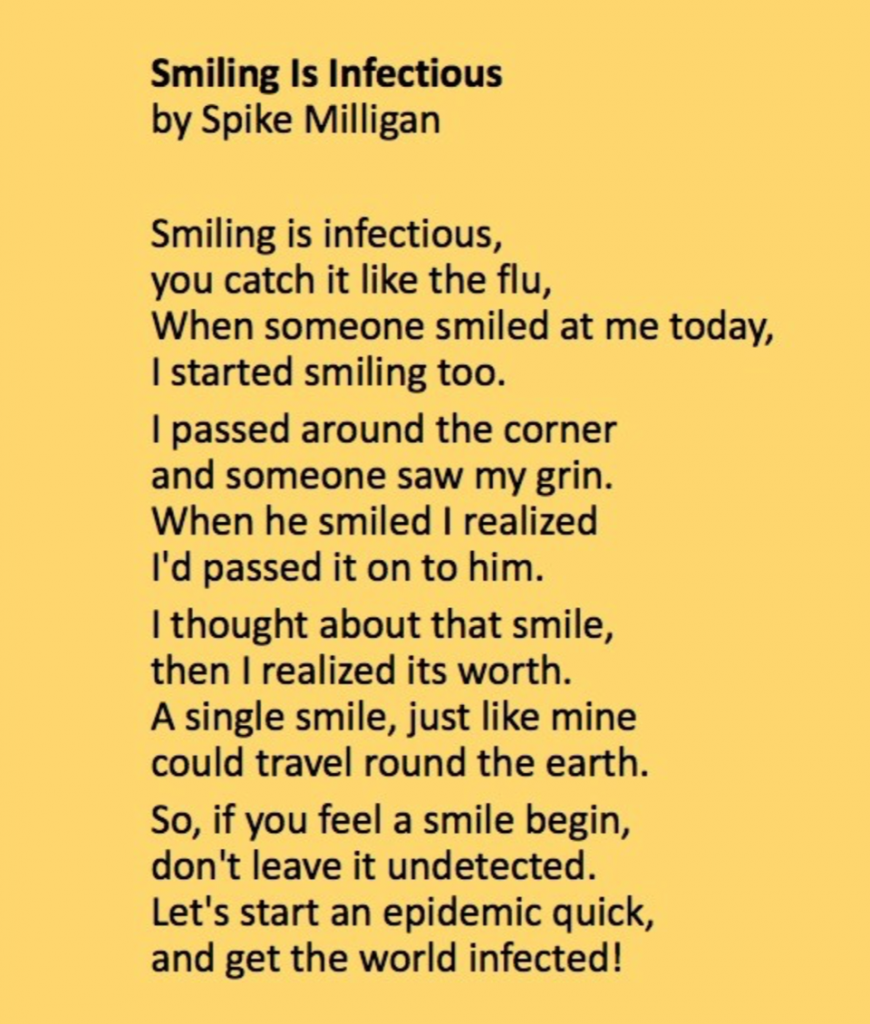











To join in with the discussion please make a donation to The Daily Sceptic.
Profanity and abuse will be removed and may lead to a permanent ban.